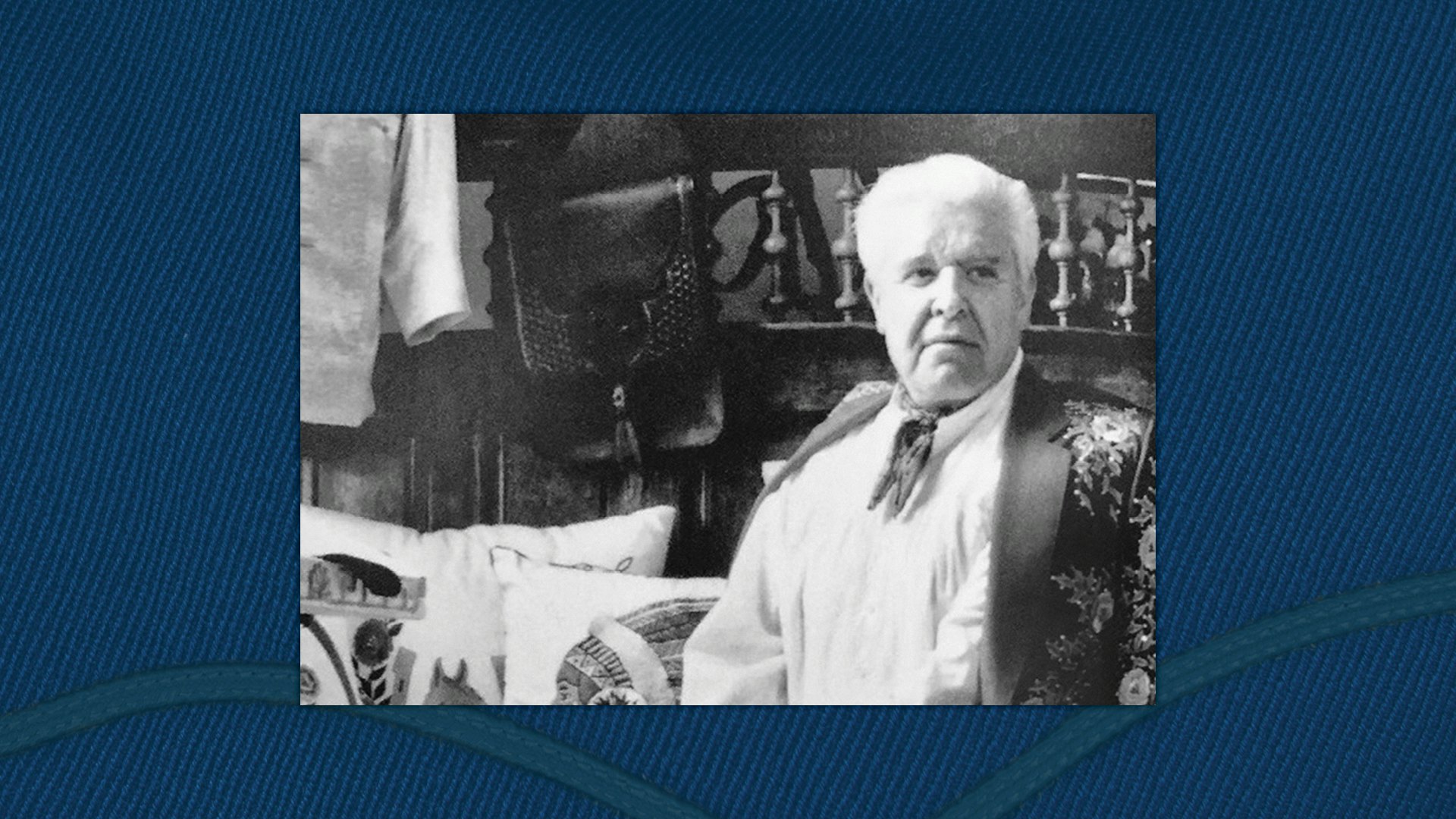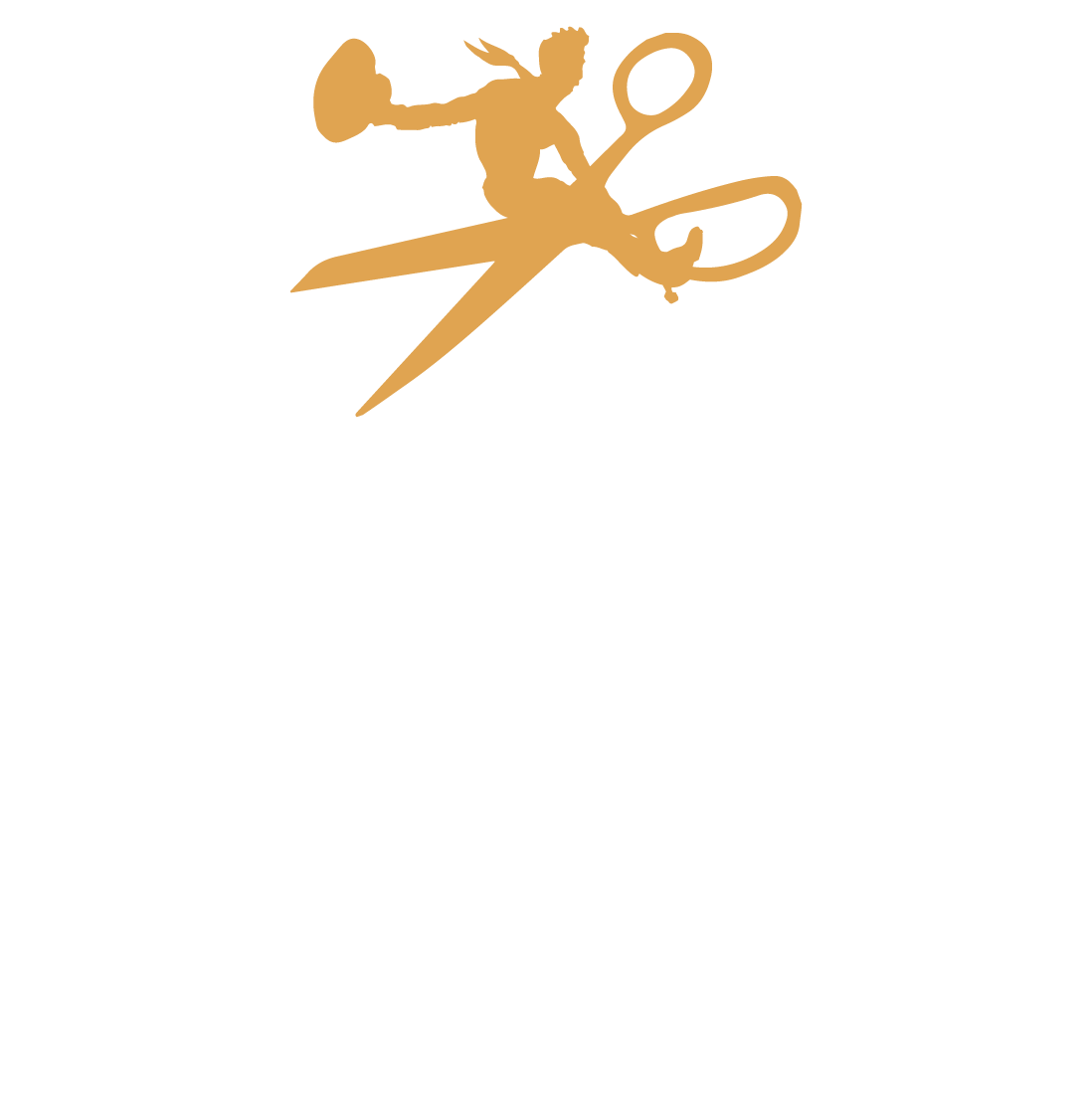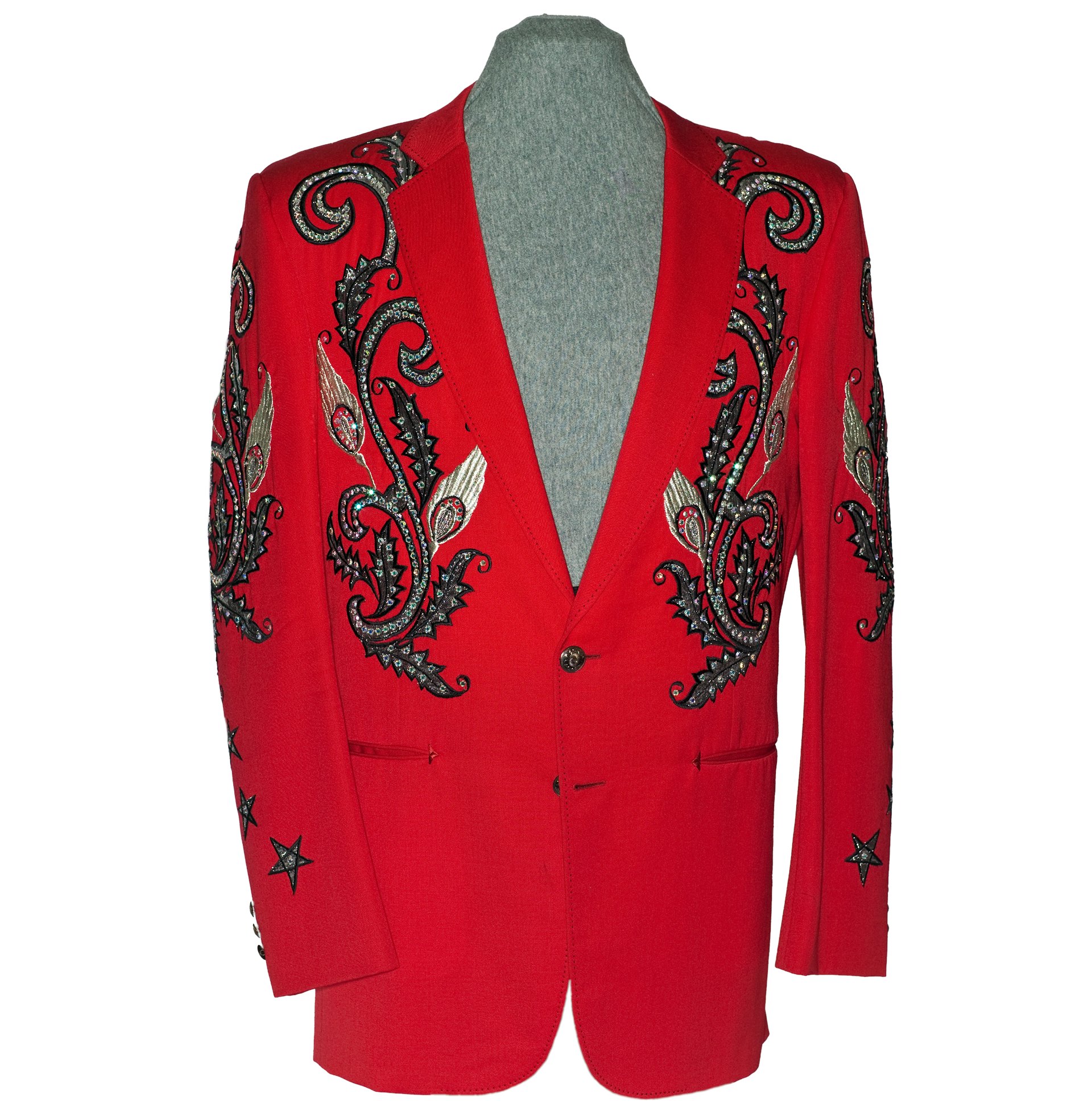

Manuel Cuevas, c. 2000. Courtesy of Holly George-Warren and Michelle Freedman, How the West Was Worn
Part Five
Manuel:
The Rhinestone Rembrandt
For more than sixty years, master tailor Manuel Cuevas has been designing one-of-a-kind clothing to reflect the inner personality of the wearer. Born Manuel Arturo José Cuevas Martínez in Coalcoman, Michoacan, Mexico, in 1933, his passion for fashion found expression at a very young age.
Manuel began making his own colorful clothes when he was seven, after his older brother taught him to sew. He apprenticed to a tailor at age twelve and was soon making prom dresses for local girls. After studying Psychology at the University of Guadalaja in the early 1950s, Cuevas headed to Los Angeles, where Hollywood tailor Sy Devore hired him to conduct fittings for celebrities such as Bob Hope and Frank Sinatra. He did freelance design work for Nathan Turk and learned how to embroider from Viola Grae before going to work for Nudie Cohn. As the head designer at Nudie’s Rodeo Tailors throughout the 1960s and into the 1970s, Manuel created iconic looks for Johnny Cash, Gram Parsons, Porter Wagoner, and many others.
When Manuel opened his own shop in North Hollywood in 1975, he brought along another Nudie’s tailor, Jaime Castaneda; master embroiderer Rose Clements; sewing and embroidery machines from Nathan Turk, who had closed his shop due to ill health; and a loyal clientele that included many of the country artists he outfitted at Nudie’s. Manuel’s creativity flourished in the 1980s, as he reinterpreted classic Nudie and Turk styles for younger, tradition-minded performers. Inspired by Mexican patterns and palettes and Native American motifs and weaving, his designs highlighted the indigenous roots of cowboy imagery in Western wear. Manuel relocated his business to Nashville in 1988, where, in the finest rodeo-tailoring tradition, the charismatic designer continues to fashion unique works of wearable art.


Manuel Cuevas and Marty Stuart, c. 1985. Photo by Raenne Rubenstein
Hillbillies Deluxe
Connoisseurs of classic country music and the bold, Western-tailored outfits worn by artists who created those sounds, Dwight Yoakam and Marty Stuart emerged in the 1980s with fresh approaches to updating their beloved musical traditions. Each of them collaborated with Manuel to design retro-styled stage wear that proudly and loudly telegraphed their appreciation for country’s past, while expressing their individuality.

Dwight Yoakam
Wanting an appliquéd and embroidered bolero jacket like the ones his heroes Buck Owens and the Buckaroos wore in the 1960s, Yoakam turned to Manuel, who helped Dwight create the trademark look he premiered on the cover of his chart-topping 1987 album, Hillbilly Deluxe. When Marty Stuart’s career began to take off in the late 1980s, he brainstormed with Manuel to create a cowboy style with rock & roll flair. The master tailor’s most dedicated customer and a loyal friend, Stuart has accrued an unequalled wardrobe of ornate Manuel suits.
Dwight Yoakam wore this Manuel-designed ensemble on the cover of his 1987 album Hillbilly Deluxe and in the music video for his hit “Little Sister.” The bolero jacket is embellished with contrasting piping; smile pockets with arrowhead stitching; turquoise buttons; and embroidered tomahawks and horseshoes, outlined with rhinestones. Courtesy of Dwight Yoakam



Dwight Yoakam, “Rocky Road Blues,” 1986
Dwight Yoakam wore this Manuel bolero jacket—embellished with rhinestones; contrasting piping; and embroidered dice, feathers, and playing cards showing a royal flush—in the music videos for his 1986 hits “Guitars, Cadillacs” and “Honky Tonk Man.” Courtesy of Dwight Yoakam


Dwight Yoakam, 1986. Photo by Alan Mayor


Pete Anderson
Dwight Yoakam’s lead guitarist and producer, Pete Anderson, wore this Manuel suit, decorated with contrasting piping, smile pockets with arrowhead stitching, and embroidered roses, in the music video for Yoakam and Buck Owens’s 1988 hit, “Streets of Bakersfield.”




Marty Stuart
This all-black, cavalry twill Manuel suit—embellished with embroidery, piping, lacing, conchos, and carved antler-horn buttons—was worn by Marty Stuart when he was a member of Johnny Cash’s band in the early 1980s.




Manuel designed this costume for Marty Stuart to wear on the cover of his 1999 concept album, The Pilgrim. It includes a floor-length cloak with velvet collar and appliquéd velvet crosses; neck scarf; stand-up collar shirt embellished with embroidery; and leather pants with lacing down the sides.



















































